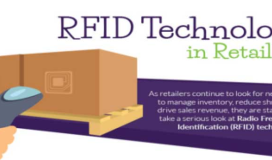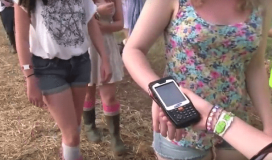The popular Science Channel TV series How Do They Do It?, which explains such topics as how bridges are built and how items are manufactured, recently aired a segment regarding RFID. Perhaps this is another sign that the technology is finally starting to become mainstream.
The show began by discussing how goods are manufactured in Asia and other areas, and how they are then shipped worldwide to stores. "Every day, a billion items are made, packaged and sent around the world, " the narrator said. "Keeping track of all these products from factory to warehouse to store is a massive challenge. And it all relies on a tiny chip, less than 1/200th of an inch across. So how do they do it? "
The episode explained the history of RFID, including its roots in the friend-or-foe identifications system set up for airplanes during the Second World War. "In essence, there is a radio receiver in all these clothes, " the narrator stated. "Retailers like Gerry Weber International rely on RFID to ensure that every store is supplied with every garment in each available size and color... Thanks to RFID, factories always know what's hot in the shops, and make sure it's in stock. "
The show took viewers inside Avery Dennison's passive ultrahigh-frequency (UHF) tag manufacturing facility in Clinton, S. C. It showed how antennas are cut from very thin aluminum, how each chip is attached to a copper strap and the strap to an antenna, how transponders are tested, and how the finished transponder is inserted into a Gerry Weber care label.
In addition, there was an interesting portion about how clothing is sorted at an 86, 000-square-foot warehouse in Germany, using a highly automated process. As goods were received at a store, viewers could watch how quickly staff members received them into inventory using handheld RFID readers.
It was a great segment, and can be viewed online for $1. 99, using Amazon Instant. If you get a chance to watch it, I recommend taking a look.



